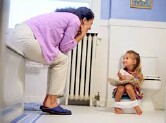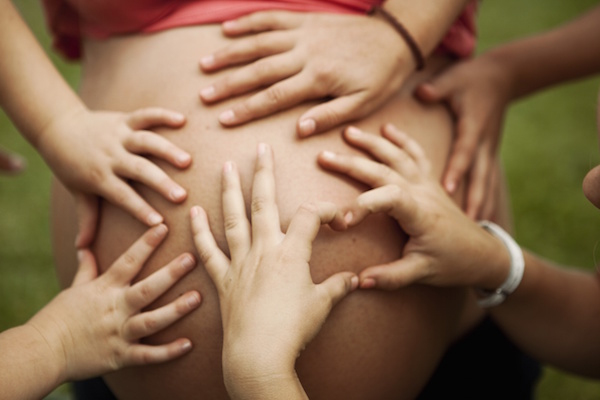
MONDAY, Oct. 29 (HealthDay News) — One less thing for toddlers’ parents to stress over: A new study finds that toilet-training methods aren’t the cause of urinary problems in children.
Whatever method parents choose — early toilet training with firm direction or a more child-oriented approach in which training begins when the child shows interest and willingness — makes no difference, researchers say.
“Don’t get hung up on how to do it,” said lead researcher Dr. Joseph Barone, an associate professor of surgery and a pediatric urologist at UMDNJ-Robert Wood Johnson Medical School in New Brunswick, N.J.
“The most important thing is that you begin the toilet training somewhere between 27 and 32 months,” he added.
Proponents of each method are adamant, Barone said. “But, in reality it doesn’t matter which method you use — what matters is that you do it,” he said.
Study co-author Marc Colaco, a medical student at UMDNJ-Robert Wood Johnson Medical School, agreed that either choice is fine.
“This is a debated topic over which way is best to toilet-train your child, but both lead to good outcomes,” Colaco said.
The report was published in the Oct. 29 issue of Clinical Pediatrics.
For the study, the researchers compared the two methods of toilet training in children aged 4 through 12. One group of 147 children didn’t have urinary problems after training, while the other group of 58 children had ongoing problems including accidents or the need to urinate often.
Neither method was more effective than the other, and there was no link between either training method and later urinary problems.
The method of toilet training isn’t as important as making sure not to create a traumatic atmosphere, said Dr. Kristin Kozakowski, a pediatric urologist at Miami Children’s Hospital in Florida.
Either method works “as long as the parents are not being negative, but providing positive reinforcement,” she said. “Every child is going to have accidents.”
Many parents use various combinations of methods, said Kozakowski, who was not part of the new study.
“But, even when parents do the best job they can, some kids still hold to the last possible second. That’s what causes the problems later on,” she said. “It’s hard to know if it’s the child’s personality or if something happened or if they are afraid of the toilet. Some of these things have to do with the child himself and others have to do with the surrounding environment.”
Kozakowski advises parents that children will usually be toilet trained when they’re ready. “Parents shouldn’t make it into an argument or a negative traumatic experience, which could lead to problems later on,” she said.
Tips for Trouble-Free Toilet Training
When you think it’s time, Barone and Peter Stavinoha, a clinical psychologist at Children’s Medical Center of Dallas, offer these tips for getting kids trained:
- Look for signs of readiness. These include showing interest in the potty or toilet; staying dry during naps or for several hours during the day; being able to follow simple directions; being able to pull down their own pants; and using words, posture or facial expressions that indicate they have to go.
- Make a small potty available in the bathroom. Try doing practice runs when you think your toddler might need to go by having him sit or stand in front of the potty for a few minutes several times a day. Most likely, your toddler won’t actually go. But it can help him recognize the urge to go and associate the potty with it.
- If your child resists, don’t sweat it. Setting up a battle of wills will only make the process unnecessarily difficult for mom and dad. Back off for a few weeks, then try again.
- While potty training, avoid asking: “Do you have to go to the potty?” You’re almost guaranteed your child will tell you “no.”
If a child is 4 or 5 and still not staying dry during the day, or if you suspect a physical cause, discuss it with your pediatrician, they say.
More information
To learn more about potty training, visit the American Academy of Family Physicians.

